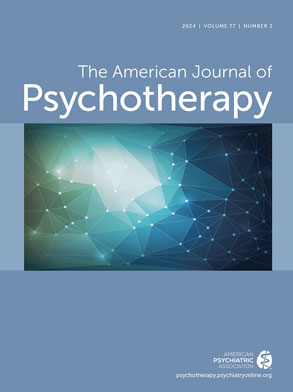Elizabeth L. Auchincloss, M.D., and Eslee Samberg, M.D. (Editors): Psychoanalytic Terms & Concepts. American Psychoanalytic Association, Yale University Press, New Haven and London, 2012. 341 pp., $75.00. ISBN: 978-0-300-10986-3 (cloth)
Commissioned by the American Psychoanalytic Association, Psychoanalytic Terms and Concepts, edited by Elizabeth L. Auchincloss, M.D. and Eslee Samberg, M.D., is a substantial revision of the 1990 third edition book of the same title by Burness E. Moore, M.D. and Bernard D. Fine, M.D. Its first edition, originally titled A Glossary of Psychoanalytic Terms and Concepts, had been published in 1967.
Editors Auchincloss and Samberg assembled “a small army of people” (p. vii). Their Editorial Board consisted of 27 analysts representing a diverse group of theoretical backgrounds. In all, there were over 175 contributors. The editors’ intent was to “bring together and explicate psychoanalytic terms and concepts used in the discourse of contemporary, North American, English-speaking clinical psychoanalysis,” (p. xiii) and they saw themselves as the “glue” to hold the project together over the more than six years it took to complete. They created a “hybrid of dictionary, encyclopedia, annotated bibliography, textbook, and intellectual history” (p. xiii).
The editors come exceptionally well qualified for the task. Elizabeth L Auchincloss, M.D. is a Senior Associate Director and Training and Supervising Psychoanalyst at the Columbia University Center for Psychoanalytic Training and Research and Vice-Chairman for Graduate Medical Education and Professor of Clinical Psychiatry at Weill Cornell Medical College. Eslee Samberg, M.D. is a Training and Supervising Psychoanalyst at The New York Psychoanalytic Institute and Clinical Professor of Psychiatry at Weill Cornell Medical College.
This edition follows the format created by Moore and Fine: an alphabetical listing of the most important terms and concepts (and sometimes theorists) of psychoanalysis. One of the most fascinating additions, though, is the new Introduction, a version of which appeared previously in the Journal of the American Psychoanalytic Association. Auchincloss and Samberg thoughtfully delineate the history of lexicography in general, as well as the specific problems inherent in psychoanalytic language. They are fully aware of the challenges involved in translation from Freud’s original German, as well as the colorful “poetic” use of metaphor, initially seen in Freud’s own writing but typical of psychoanalytic writing in general.
The result is extraordinary: the volume is a comprehensive “mini-encyclopedia” of psychoanalysis from its Freudian inception to the state of contemporary psychoanalysis with its growing pluralism. The editors admit to their own point of view: “ego psychology or modern structural theory, with an admixture of object relations theory, self psychology, and developmental psychoanalysis” (p. xiv), but these biases are not evident. They have thoroughly succeeded in their mission of providing a “diversity of theoretical orientation, academic discipline, and geographical location” (pp. xxii–xxiii). Each entry is an exceptionally balanced discussion, a mini-literature review, if you will, of the most relevant issues (including controversies) that are present in psychoanalysis today, including their evolution from Freud’s own thinking or how they are a significant theoretical divergence from Freud. There are excellent discussions of the changing psychoanalytic perspective on homosexuality (e.g. from Freud’s own confusing stance and the early view of homosexuality as a perversion to the more broadly held view today); on female sexuality (e.g. from Freud’s phallocentric view); and evolution in the concepts of Freud’s structural theory; theory of anxiety, and metapsychology, among many others.
One major difference from Moore and Fine’s 1990 third edition is the choice to create a single extensive bibliography at the end of the volume, rather than a few references after each entry that Moore and Fine provided. Each entry, though, sufficiently references those who have written about a particular topic.
In essence, Auchincloss’s and Samberg’s edition is a major improvement. There is an inconsistency, though, in that only some entries provide Freud’s original German. Since translation is so central (and so controversial despite Strachey’s Standard Edition), it would have been helpful to include Freud’s original German word in any relevant entry. Furthermore, providing an index of all the authors (or, at the very least, highlighting authors’ names) referenced throughout the text would have made accessing information easier. In the entry on “ego,” I would have also preferred a more thorough discussion about how the concept of “ego” fits into current neurocognitive scientific thinking. Given the enormity of this project, however, these comments are, of course, not particularly consequential and hardly detract from this volume’s excellence.
Auchincloss and Samberg have more than succeeded in creating a “nondogmatic perch from which to view the contemporary terrain” (p. xxiv). They aimed for “as broad a readership as possible” such that their dictionary would be on the “shelf of every student of the mind, regardless of discipline” and regardless of level of expertise, (p. xxii). This edition of Psychoanalytic Terms and Concepts deserves as wide an audience as possible. For the seasoned clinician, it is nothing short of a superb review course, i.e., a veritable tour de force, of the expansive history (and current practice) of psychoanalytic thinking. Its definitions and explanations are so clear, well-researched, and devoid of the jargon so typical of psychoanalytic writing that it is also an essential read for the psychoanalytic neophyte. I would wholeheartedly recommend it as a welcome addition for the library of anyone interested in the human mind.

